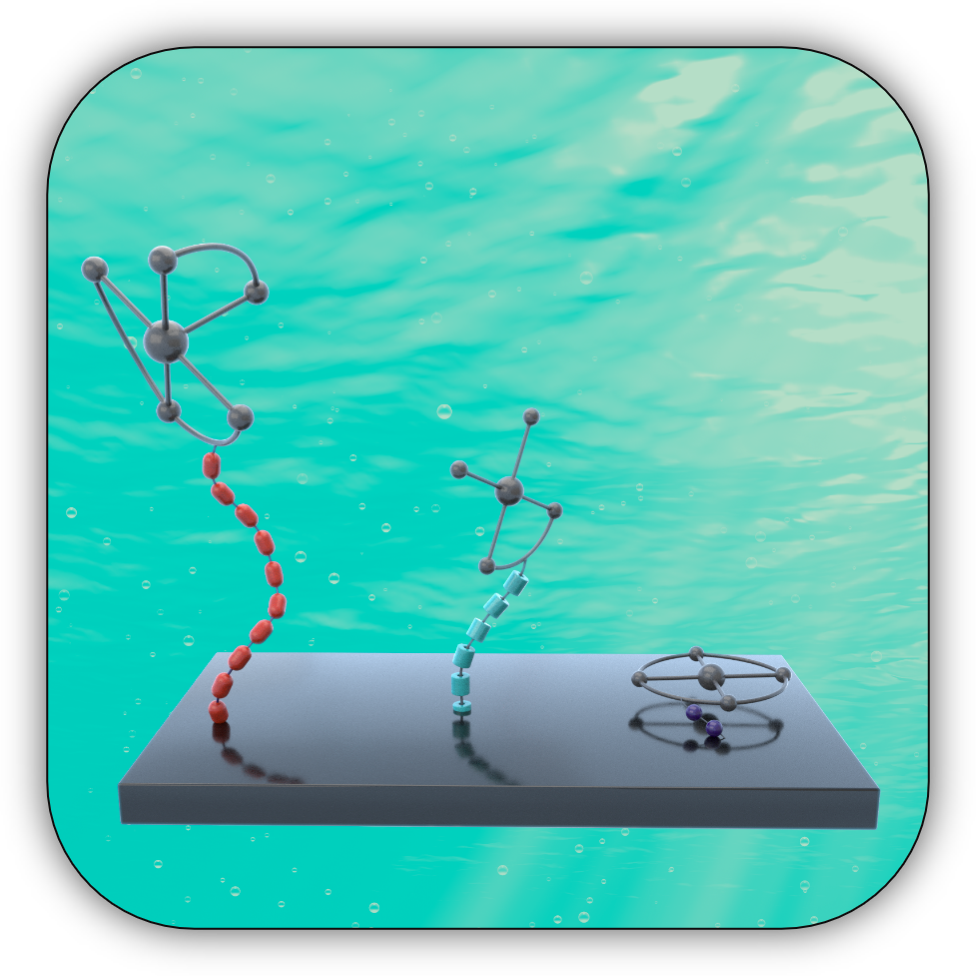Catalyst-Semiconductor Interfaces
The aim of the Catalyst-Semiconductor Interfaces Thrust is to understand the fundamental science behind the design of robust interfaces comprised of molecular catalyst-light absorbing semiconductor materials (hybrid photoelectrodes). We will aim to do this by:
Co-Leader Catalyst-Semiconductor Interfaces Thrust - Jim Cahoon
Co-Leader Catalyst-Semiconductor Interfaces Thrust - David Grills
Identifying catalyst/anchoring group/electrode surface combinations that facilitate efficient vectoral light induced charge transfer and result in durable integration of molecular catalysts with semiconductors.
Evaluating the photoelectrochemical performance of functionalized planar electrodes for light-driven reduction of CO₂.
Using a mechanism-guided approach that leverages theory and experiment to evaluate the influence of catalyst, linker identity, and semiconductor properties on hybrid photoelectrode performance for CO₂ reduction with metrics that include activity, durability, and selectivity.
Establishing and advancing state-of-the-art surface-specific microscopy, spectroscopy, and theory to characterize catalysts integrated with semiconductors and other heterogeneous supports.
Identifying environments at the photoelectrode-solution interface that impact a catalyst activity and/or durability, including electric fields, ions, polarity, and dielectric constants.
Jia, X.; Nedzbala, H. S.; Bottum, S. R.; Cahoon, J. F.; Concepcion, J. J.; Donley, C. L.; Gang, A.; Han, Q.; Hazari, N.; Kessinger, M. C.; Lockett, M. R.; Mayer, J. M.; Mercado, B. Q.; Meyer, G. J.; Pearce, A. J.; Rooney, C. L.; Sampaio, R. N.; Shang, B.; Wang, H. Inorg. Chem. 2023, 62 (5) 2359-2375 https://doi.org/10.1021/acs.inorgchem.2c04137
Suo, S.; Sheehan, C.; Zhao, F.; Xiao, L.; Xu, Z.; Meng, J.; Mallouk, T. E.; Lian, T. . J. Am. Chem. Soc., 2023, 145 (26), 14260-14266. https://doi.org/10.1021/jacs.3c02333





